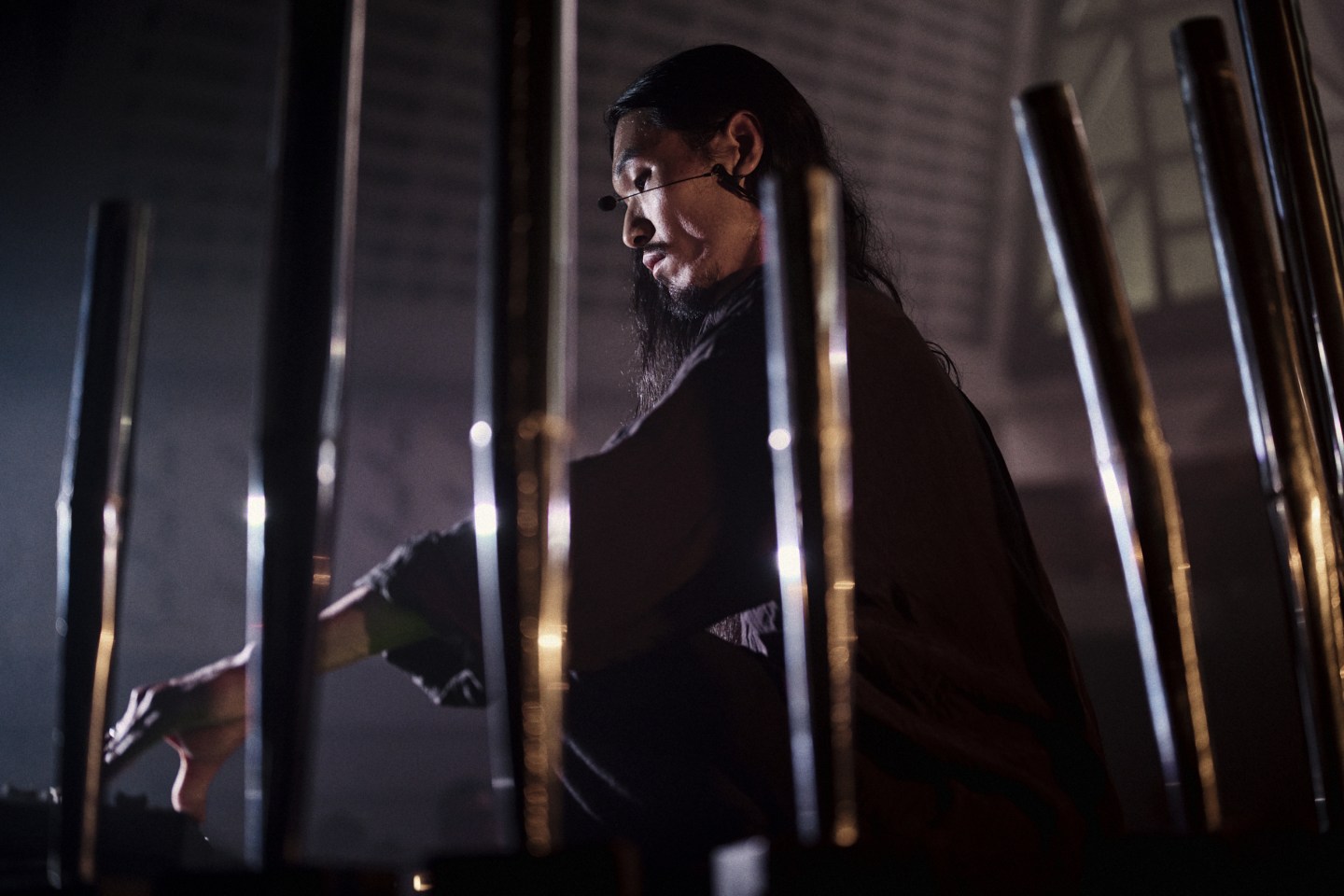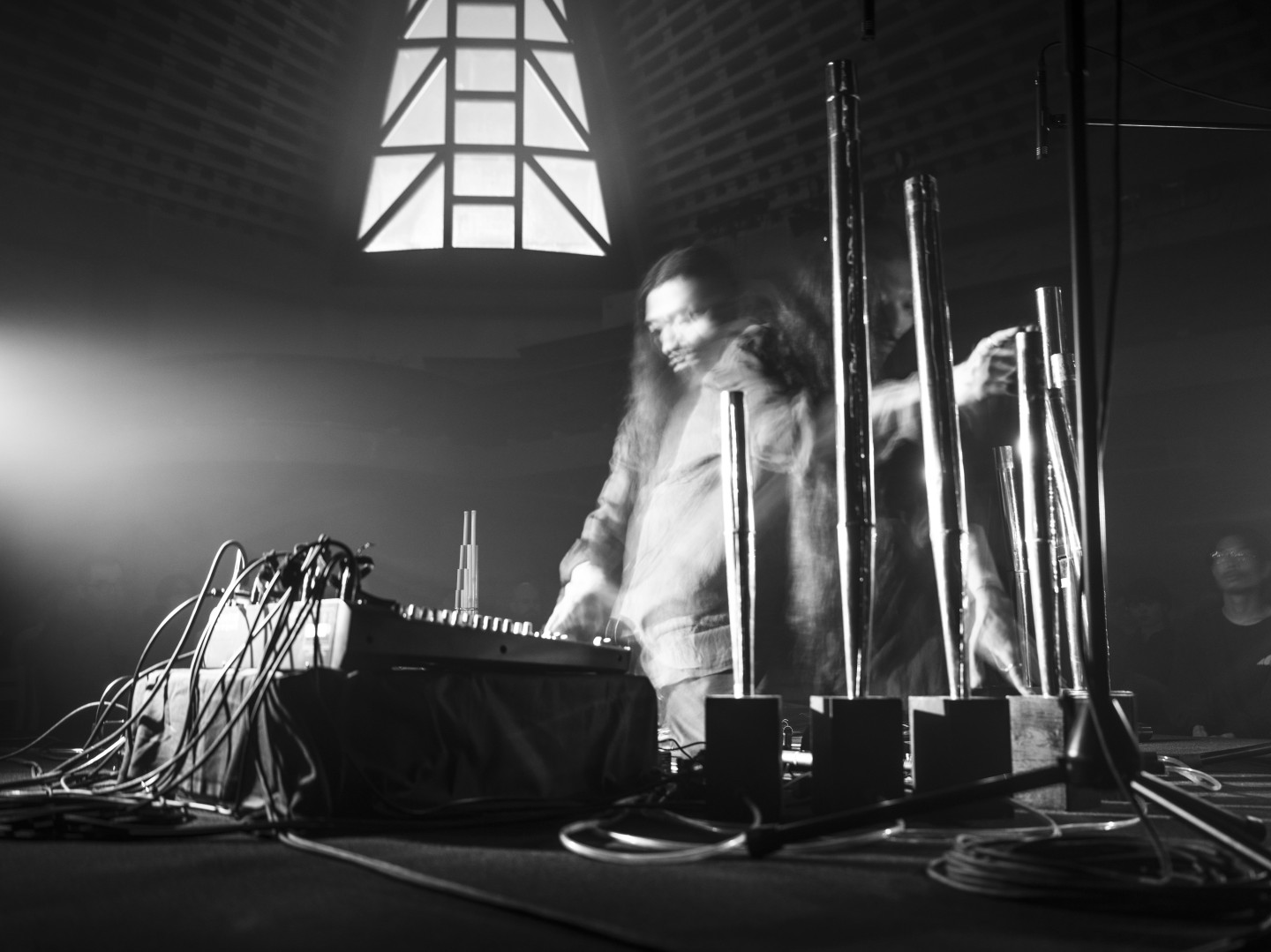FUJI||||||||||TA’s outlaw ambient
On MMM, the Japanese artist uses his “third voice” and keyless pipe organ to craft an album that operates under its own set of rules.
 FUJI||||||||||TA. Photo by Brian Whar.
FUJI||||||||||TA. Photo by Brian Whar.
Discover Blogly is The FADER’s curated roundup of our favorite new music discoveries.
Everyone should get to see Yosuke Fujita perform live at least once. Flanked by pipes, pumps, and other cylindrical objects of varying size and material through which air can be pushed, he moves with a phantasmal fluidity. His set builds slowly, and eventually, he introduces his own body as another air vessel, allowing monosyllabic bursts to fly from his mouth. At times they resemble singing; often, they sound entirely inhuman.
 FUJI||||||||||TA. Photo by Yuichiro Noda.
FUJI||||||||||TA. Photo by Yuichiro Noda.
Fujita’s new album, MMM, follows the rhythm of his live set. A story in three parts, it is completely self-contained, perfect by its own logic while following no rules other than its own.
“M-1” is slow and gentle, a series of accumulating drones courtesy of his hand-crafted pipe organ: a series of mounted metal tubes that range in height from roughly two to four feet. For the new record, he abandoned his traditional hand-pumping method in favor of an electric pump; the device allowed him to operate the instrument more freely while simultaneously waving a shotgun microphone nearby, adding another variable to the mix.
The result is hypnotizing, a cloud world built only on wind, its currents phasing in and out of sync as storms develop and dissipate. The trance grows more and more unsettling as the track glides forward. But, as uncomfortable as the dissonance may be, nothing is jarring enough to jerk you out of your fugue state.
Then “M-2” begins, and you’re alone in a room with Fujita’s “third voice,” an alarming sound developed from an extended technique through which, by constantly inhaling and exhaling, he strains his inner organs to create something between a wheeze and a growl.
Not everything Fujita does is novel: In fact, though his pipe organ is built from scratch and looks like a spacecraft, it functions much like the positive organs used to perform sacred music in Europe as far back as the 10th century. In fact, his strongest influence comes from this time period as well, though it traces back to his home country: Fujita is trained in a ceremonial form of Japanese court music called gagaku, in which sounds were layered in a way that had little in common with the rigid harmonies developing on the other side of the planet.
 FUJI||||||||||TA. Photo by Yuichiro Noda.
FUJI||||||||||TA. Photo by Yuichiro Noda.
Fujita’s extended vocal technique, on the other hand, is wholly his own. Though it can at times resemble throat singing, it’s more guttural and rhythmic than melodic, a death rattle that pulses with vitality for nine-and-a-half minutes. After a while, it becomes as mesmeric as the drones in “M-1,” perhaps even more so.
“M-3” joins the two worlds, completing the circle by bridging the ancient and the supernatural. The track wastes little time reaching a fever pitch of activity, its organ tones phasing frantically as Fujita sings long notes in a loose pentatonic scale. All the while, his third voice haunts the song’s substratum, pushing MMM to its finish like the breath of a Greek god driving a ship toward uncharted waters.